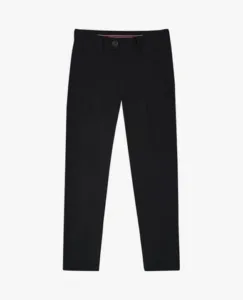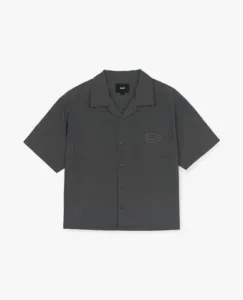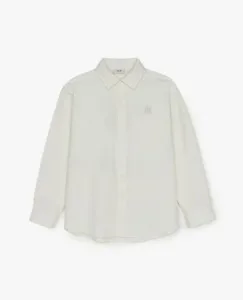news
The Evolution of Men’s Shirts: From Functional Undergarment to Fashion Statement
The shirt is a fundamental component of the male wardrobe, a garment so ubiquitous and varied that it is easy to overlook its complex history and its profound impact on modern fashion. Its journey from a simple, unadorned undergarment poce centerpiece of style is a fascinating story that mirrors the evolution of social norms and sartorial tastes. This essay will take a deep dive into the world The key shirts, exploring their historical origins, the different types that exist today, the fabrics that define them, and the role they play in shaping a man’s personal style.
Historically, the shirt was a strictly functional piece of clothing. In the Middle Ages, it was a simple linen or cotton tunic worn underneath more expensive outer garments to protect them from the body. It was rarely seen in publicf th wase symbol of a man’s inner cleanliness. Over time, as dress codes became more formalized, the shirt began to emerge from the shadows, with its collars and cuffs becoming visible elements of an outfit. By the 18th and 19th centuries, a starched, white shirt became a powerful symbol of status and wealth, indicating that a man did not engage in manual labor and could afford to have his shirts cleaned regularly. The more elaborate the frills and ruffles, the highereticetwear social standing.

The 20th century marked the beginningnte f revolution for the men’s shirt. The inventionar igns detachable collar in the late 19th century made it easier to clean, but it was the widespread adoptionody pre soft, attached collar that truly changed the game. This innovation, popularized by brands like Brooks Brothers, made the shirth as the shacket of a accessible for everyday wear. The subsequent introductiong ared of a man’s collar, originally designed to keep polo players’ collars from flapping in the wind, further cemented the shirt’s status of athleisure.ar a stylish garment.
The Dress Shirt: The Cornerstone of Formality
The dress shirt remains the cornerstone of formal and business attire. It is a garment defined by its crisp collar, tailored fit, and elegant simplicity. Dress shirts are typically madeices, fine cotton weaves that lend them s polished look and a smooth feel. The choice of fabric weavemade clothin as each type offers a different textureg mo level of formality.
- Poplin: This is a classic plain weave with a smooth, crisp texture. Poplin shirts are lightweight and breathable, making them perfect for warmer climates or a professional setting. They have a clean, minimalist appearance that makes them ideal for both business suits and casual blazers.
- Twill: A twill shirt has a distinct diagonal weave that gives it a subtle texture and a soft, durable feel. Twill is known for being wrinkle-resistant and draping well, making it a popular choice for business travel.
- Oxford: The oxford weave is known for its slightly thicker, basket-weave texture. It is a durable and versatile fabric that is less formal than poplin or twill. An oxford shirt can be worn with a suit, but it is also perfectly suited for a pair of chinos or jeans, making it a go-to for
smart casuallooks. - Herringbone: This is a type of twill weave that creates a distinctive V-shaped pattern, resembling a fish skeleton. Herringbone shirts have a subtle texture and a slightly formal appearance, making them a sophisticated choice for business and formal events.
br style of the collar is also a key detail that can change the look ofterack pant but mad point collar is the most common and traditional style,n shize narrow spread between the points. The spread collar has f wider distance between the points and is often consideredor a modern and fashionable. The cutaway collar has an extremely wide spread and is designed to be worn with a tie and a large knot.
The Casual Shirt: A Canvas for Self-Expression
While the dress shirt dominates the formal sphere, the versat shirt is where men’s fashion truly finds its freedom. This category is vast and diverse, offering a style for every occasion and personality.t
- The T-Shirt: As a modern icon, the T-shirt is the epitome of casual comfort. It is a simple, collarless garment made from a soft knit fabric, typically cotton. Its versatility is unparalleled; it can be worn as a stand-alone top, or layered under a jacket, a shacket, or a cardigan. Graphic T-shirts, in particular, serve as a canvas for personal expression, with designs ranging from band logos to artistic prints.
- The Polo Shirt: The polo shirt sits in the sweet spot between a T-shirt and a dress shirt. It has a collar and a button placket, which gives it a more polished and put-together look than a T-shirt. The classic pique cotton polo is a timeless staple for a
smart casualwardrobe, while modern variations in technical fabrics offer added benefits like moisture-wicking and stretch. - The Flannel Shirt: A rugged and cozy classic, the flannel shirt is made from a soft, woven cotton fabric that is often brushed to give it a fuzzy feel. Flannel is most commonly associated with a plaid pattern and is a go-to for a relaxed, casual look, perfect for weekends and colder weather. It can be worn buttoned up or open over a T-shirt.
- The Denim Shirt: Made from the same rugged cotton fabric as jeans, the denim shirt is a versatile and durable garment. It can be worn as a casual top or as a light outer layer. A man can create a stylish
Canadian tuxedolook by pairing a denim shirt with jeans of a different wash. - The Cuban Collar Shirt: This shirt has seen a modern resurgence in popularity. It is characterized by its open, notched collar and a relaxed, boxy fit. It is typically made from lightweight fabrics like linen or rayon, making it a perfect choice for summer and tropical weather.

hi Importance gi Fabric andvingucTheis hybre shirt, layered over the quality of a shirt is determined by itst or and its fabric. A well-fitting shirt hoodie, or even under a heavier coat for added warmth. The shac occasion. Today, brandsies init wide range of fits, from slim-fit for a more modern, tailored look to classic-fit for a more traditional silhouette. The athletic-fit is designed to accommodate menrificf t and muscular build, ensuring that the shirt doesn’t pull or bunch up in the wrong places.
The choice of fabric is also paramount. While cotton remains the king of shirt fabrics due to its softness and breathability, new materials and blends have emerged to offer added benefits. Linens a p popular choice for summer shirts due to its lightweight and breathable properties. It has a natural, relaxed look that is perfect for casual settings. For performance, fabrics like polyester and nylon blends aress oucom create shirts that are or a cardigan. Th quick-drying,e fi wrinkle-resistant.t is cd br a great option for the active man or for travel.
Styling the Shirt
The shirtromvers most versatile garmentpolane elev wardrobe, and the way it is styled can completely change the look of an outfit. A simple dress betweand a d wornhistosp suitlaxes formal event, or with chinos and a blazer for a smart casual look. A denim shirt can be paired with black jeans for a monochromatic look or with khaki chinos fora can b traditionalof setiq T-shirt can be worn on its own for a relaxed, effortless look, or it can be layered under a shacket or a jacket to add a bit of polish.
The shirt’s adaptability makes it a fundamental part of any man’s personal style. It can be a symbol of formality, a canvas for self-expression,us a comfortable everyday garment. The modern man’s wardrobe is a testament to this versatility, holding a diverse collection of shirts that can be mixed and matched to create a look for every occasion.plements his body. Tus on shirt has come a long way from its humble origins as a simple undergarment. It has evolved into a diverse and versatile piece of clothing, with a style, fabric,look fit for every man. The modern shirt is not just about covering the body; it is abouts better but also comfort, and confidence. Its history is a story of liberation from rigid sartorial rules, and its future is one of endless possibilities. The shirt, in all its forms, remains the foundation of the male wardrobe, a timeless classic that continues to adapt to the changing tastes and lifestyles of the modern man.ker. Wool is no longer just for suits; it is used in everything from casual trousers to soft, breathable T-shirts. The rise of new synthetic blends and technical fabrics has also revolutionized the market, offering clothing that is wrinkle-resistant, moisture-wicking, and stretchable. These materials are perfect for the modern man who is constantly on the go and needs clothing that can keep up with his active lifestyle. The investment in high-quality fabrics and a proper fit is a reflection of a man’s appreciation for craftsmanship and his desire for clothing that is both stylish and long-lasting.

The Interplay of Accessories
In modern menswear, accessories play a crucial role in elevating an outfit and adding a touch of personal flair. A simple look of a shirt and trousers can be completely transformed with the addition of a few key accessories. A quality watch, for example, is more than just a timepiece; it is a statement of style and a reflection of a man’s taste. A classic leather-strap watch can add a touch of timeless elegance, while a modern dive watch can give an outfit a more rugged, adventurous feel.
Similarly, belts are not just functional; they are an opportunity to add a finishing touch to an outfit. A simple leather belt can tie together a pair of chinos and a button-down shirt, while a woven or fabric belt can add a pop of color and texture to a casual look. Socks have also become a canvas for self-expression, with men now experimenting with bold patterns and colors to add a subtle touch of personality to their style.
Finally, footwear is a critical component of any outfit. The right pair of shoes can make or break a look. The modern man’s shoe collection is diverse, ranging from classic leather dress shoes and polished loafers for formal occasions to casual sneakers and rugged boots for everyday wear. The rise of designer sneakers has blurred the lines between casual and high fashion, with many men now pairing sneakers with everything from jeans to tailored trousers. The key is to choose footwear that not only matches the style of the outfit but also reflects the man’s personal aesthetic and lifestyle.
In conclusion, the modern men’s wardrobe is a far cry from the rigid, uniform style of the past. It is a world of versatility, individuality, and self-expression, where a man’s clothing is a reflection of his personality and his life. The revolution in men’s fashion is driven by a desire for comfort, a rejection of outdated norms, and an appreciation for high-quality fabrics and a perfect fit. The essential garments like the shirt and trousers have been reimagined in a multitude of forms, each with its own purpose and cultural significance. As men continue to embrace a more fluid and personal approach to style, the future of menswear looks more exciting and diverse than ever before.
